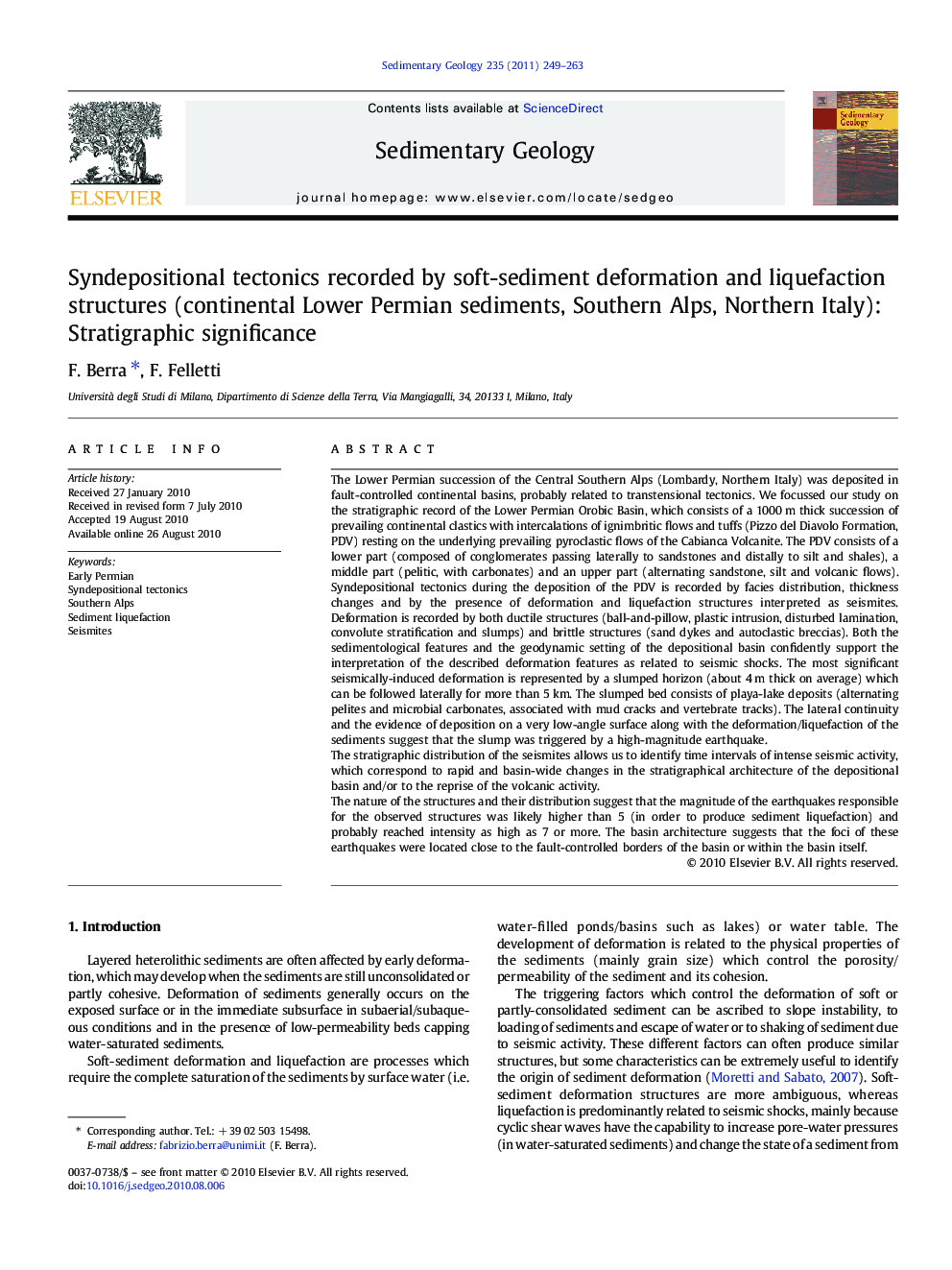| کد مقاله | کد نشریه | سال انتشار | مقاله انگلیسی | نسخه تمام متن |
|---|---|---|---|---|
| 4690245 | 1636112 | 2011 | 15 صفحه PDF | دانلود رایگان |

The Lower Permian succession of the Central Southern Alps (Lombardy, Northern Italy) was deposited in fault-controlled continental basins, probably related to transtensional tectonics. We focussed our study on the stratigraphic record of the Lower Permian Orobic Basin, which consists of a 1000 m thick succession of prevailing continental clastics with intercalations of ignimbritic flows and tuffs (Pizzo del Diavolo Formation, PDV) resting on the underlying prevailing pyroclastic flows of the Cabianca Volcanite. The PDV consists of a lower part (composed of conglomerates passing laterally to sandstones and distally to silt and shales), a middle part (pelitic, with carbonates) and an upper part (alternating sandstone, silt and volcanic flows). Syndepositional tectonics during the deposition of the PDV is recorded by facies distribution, thickness changes and by the presence of deformation and liquefaction structures interpreted as seismites. Deformation is recorded by both ductile structures (ball-and-pillow, plastic intrusion, disturbed lamination, convolute stratification and slumps) and brittle structures (sand dykes and autoclastic breccias). Both the sedimentological features and the geodynamic setting of the depositional basin confidently support the interpretation of the described deformation features as related to seismic shocks. The most significant seismically-induced deformation is represented by a slumped horizon (about 4 m thick on average) which can be followed laterally for more than 5 km. The slumped bed consists of playa-lake deposits (alternating pelites and microbial carbonates, associated with mud cracks and vertebrate tracks). The lateral continuity and the evidence of deposition on a very low-angle surface along with the deformation/liquefaction of the sediments suggest that the slump was triggered by a high-magnitude earthquake.The stratigraphic distribution of the seismites allows us to identify time intervals of intense seismic activity, which correspond to rapid and basin-wide changes in the stratigraphical architecture of the depositional basin and/or to the reprise of the volcanic activity.The nature of the structures and their distribution suggest that the magnitude of the earthquakes responsible for the observed structures was likely higher than 5 (in order to produce sediment liquefaction) and probably reached intensity as high as 7 or more. The basin architecture suggests that the foci of these earthquakes were located close to the fault-controlled borders of the basin or within the basin itself.
Research Highlights
► Soft-sediment deformation is described in Permian continental sediments.
► Their origin is related to seismic shocks in a fault-controlled basin.
► Features of the structures suggest earthquake magnitude higher than 5.
► Stratigraphic distribution marks major changes in basin architecture.
Journal: Sedimentary Geology - Volume 235, Issues 3–4, 1 April 2011, Pages 249–263